The Long Slow Fade of Raleigh Springs Mall
Raleigh Springs Mall didn't invent suburban shopping in Memphis, but for a while, it defined it.
Opening in August 1971, tucked between Austin Peay Highway and Yale Road, the mall arrived with the confidence of a city expanding into its edges.
It had four anchor stores, seventy shops, a Woolworth, and an identity that felt modern in ways downtown wasn't.
For anyone mapping out things to do in Memphis, Tennessee, in the 70s and 80s, Raleigh Springs Mall made the list by default. That didn't last. But its rise left a trace.
Groundbreaking Retail in the Suburbs (1969-1980s)
Construction on Raleigh Springs Mall began in 1969, and the Edward J. DeBartolo Corporation developed it.
The site wasn't technically in Memphis yet. It was part of the Raleigh area in northeastern Shelby County, which at the time sat outside city limits.
Two years later, on August 11, 1971, the doors opened.
Memphis now had its second major indoor shopping center, with Southland Mall having beaten it by a narrow margin.
Inside, shoppers found a lineup that combined national and regional names.
Sears and JCPenney covered the national bases. Goldsmith's and Lowenstein's represented local retail strength.
Together, they formed the four original anchors. A Woolworth five-and-dime sat near JCPenney, giving the layout a downtown feel, even under one roof.
The mall stretched across a single level originally.
Dillard's later added a second floor after taking over Lowenstein's in 1982.
The property offered a simplified shopping route that didn't depend on escalators or elevators until that expansion.
For years, this layout worked. Long before Memphis annexed Raleigh, the mall attracted customers from across the county.
Even without novelty, the mall's consistency made it feel like a steady part of everyday life.
Market Erosion and Shifting Foot Traffic (1990s-2003)
Raleigh Springs Mall had a head start, but it didn't hold the lead.
By the early 1990s, Memphis retail was redrawing its own map.
Hickory Ridge Mall opened in 1981. Mall of Memphis, despite early struggles, was gaining traction.
Wolfchase Galleria opened in 1997 and quickly pulled national tenants and shoppers toward northeast Shelby County.
Raleigh Springs Mall didn't fall in a single moment, but its role in the retail grid started to shrink.
In the 1990s, Woolworth's exit closed off another original draw.
That space became a twelve-screen multiplex, which seemed like a patch more than a pivot.
The theater stayed open into the next decade, but the draw didn't reverse the overall pattern.
By 2003, three of the four main anchors pulled out.
Dillard's named its Raleigh Springs Mall location among several closures announced that year.
Goldsmith's was next. Federated Department Stores, its parent company, was consolidating assets and dropped the Raleigh store by April.
JCPenney, which had already been downgraded to an outlet format, also closed by the end of that year.
Even with smaller tenants still operating, the core framework was gone.
Without the department stores and steady anchor sales, the leasing value dropped.
Empty storefronts multiplied. What had once felt like stable, everyday retail turned into a quieter, lower-traffic property in just a few years.
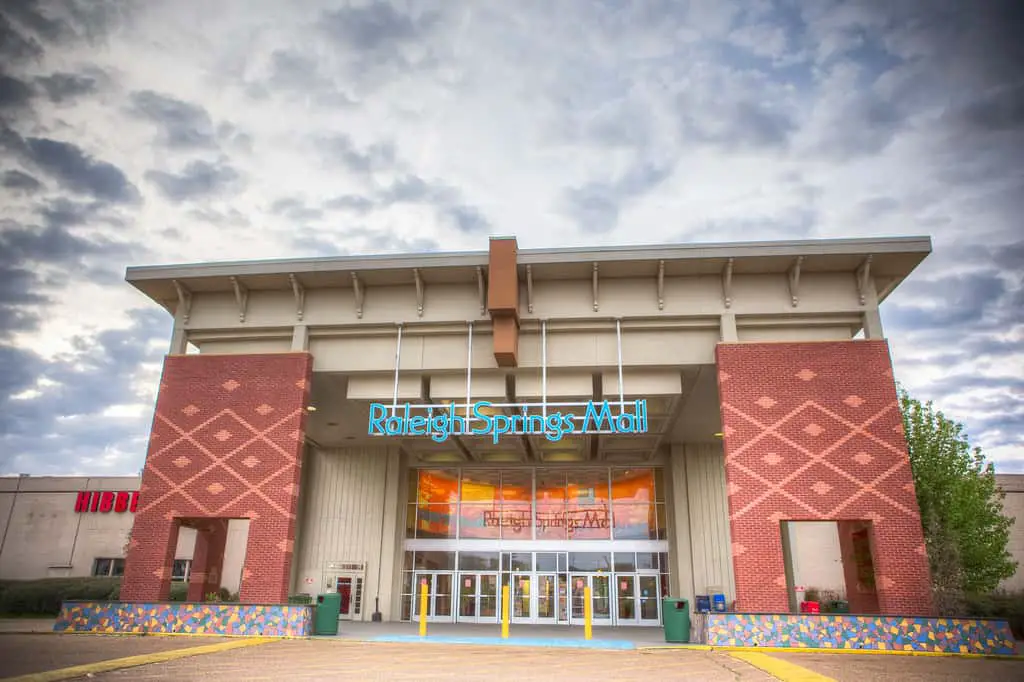
Property Decline and Failed Retail Pivots (2004-2016)
By 2004, Raleigh Springs Mall activity no longer matched its square footage. National brands had moved on.
Some interior shops hung on, including a few clothing outlets and accessory stores, but many spaces sat unlit behind security grates. Maintenance slowed.
Natural light filtered in through skylights, but foot traffic dropped enough that some hallways stayed quiet through entire afternoons.
A plan surfaced in 2005. Walmart had begun talks with Simon Property Group about opening a Supercenter on the mall property.
The idea involved tearing down the former JCPenney space and the twelve-screen theater.
A new build would take their place, reshaping the western side of the Raleigh Springs Mall.
Negotiations went on for months. But the Supercenter never broke ground.
By early 2010, Walmart had instead chosen to upgrade its existing location nearby.
In January 2011, the last anchor closed. Sears confirmed its departure with a planned exit on April 3.
The store had been one of the last traffic drivers on site.
Once it closed, no large retail anchors remained.
The twelve-screen theater, which replaced the Woolworth space, also shuttered that same year on December 5.
By late 2016, three tenants still operated: City Trends, World Diamond Center, and a church.
These businesses stayed open while the rest of the mall was surrounded by boarded entries and dated signage.
In November, the City of Memphis finalized the purchase of the entire property.
That decision ended private retail at the site after 45 years, clearing the way for a full public redevelopment.
Civic Redevelopment and Construction Cycle (2017-2020)
When the City of Memphis took control in 2016, it didn't keep the walls.
They took the whole thing down. Retail leases were over.
Glass fronts, food court tiles, and rooftop units were ripped out, hauled off, and ground down to grade.
What had been an enclosed mall became raw land again, cleared for a completely different purpose.
O.T. Marshall Architects didn't try to save the shape.
Their plans erased it. In place of a mall came a civic campus: police precinct, traffic division, library, and open green space.
The rear parking lot, paved decades ago for Goldsmith's and Sears overflow, was dug up and contoured into an 11-acre lake.
It would hold stormwater, but more than that, it would change how the space worked.
Construction started in 2017. The crews moved through the phases without much noise.
First came utility work and rough grading, then the walking trail and foundation pours.
The precinct rose where the old Sears anchor had stood.
Steel and concrete this time. No escalators, no storefronts. The Raleigh library took shape a bit slower, but it followed.
On November 19, 2020, the ribbon went up. No shoppers waiting. No food court music.
Just a city project finished on schedule, give or take, and opened for public use.
The shape of the lot hadn't changed, but everything inside it had.
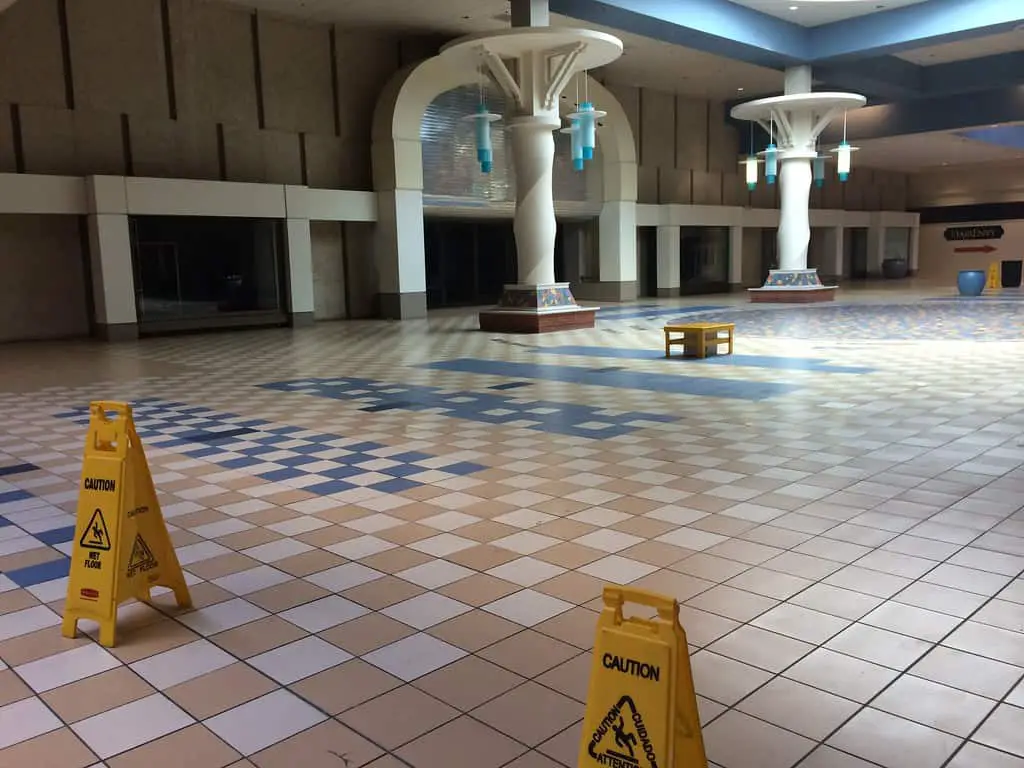
Real Estate Reset and Ground-Level Recovery (2021-Present)
By early 2021, people had a reason to be there again.
Not for sales or store hours, but for library cards, court filings, and walk-in service at the precinct.
You didn't go to browse. You went because you needed to. Or because your kid wanted to skate.
The city carved out twenty acres for private development.
It wasn't speculative. The model had changed. No anchors to pull foot traffic, no food court to circle.
However, the site had baseline activity, government employees, residents, and daily service calls.
That gave it value. Planners estimated it could generate $91 million in new investment.
That figure wasn't guaranteed, but it wasn't made up either.
A few old access roads stayed, though rerouted. Some of the original parking layout was kept but re-striped to fit the new buildings.
The walking trail ran through what used to be the mall's main corridor.
A cruiser was parked in the spot where Dillard's entrance once opened.
No signs marked the past, it was visible if you remembered it, but it was no longer named.
The skate park, built near the old JCPenney, opened in late 2020.
Concrete bowls, metal rails, and actual turnout. Nothing ornamental. It got used immediately.
Retail had cleared out years earlier. But the site still functioned. It still drew traffic.
Still offered a reason to stop, stay a while, and walk back out the door.
It's just not the kind of traffic it was built for.
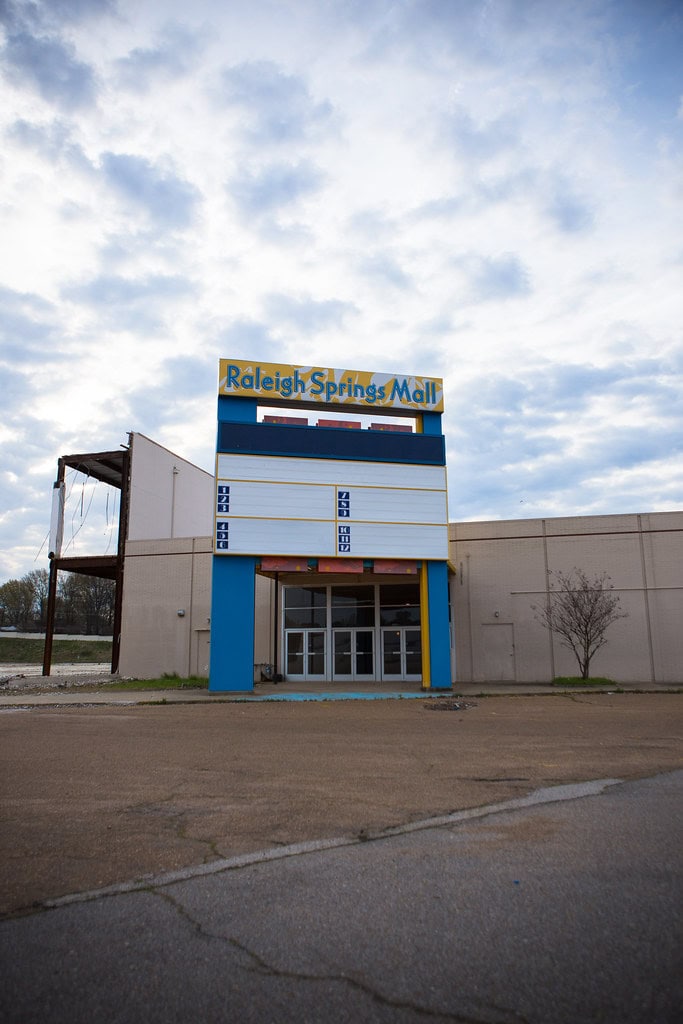
🍀


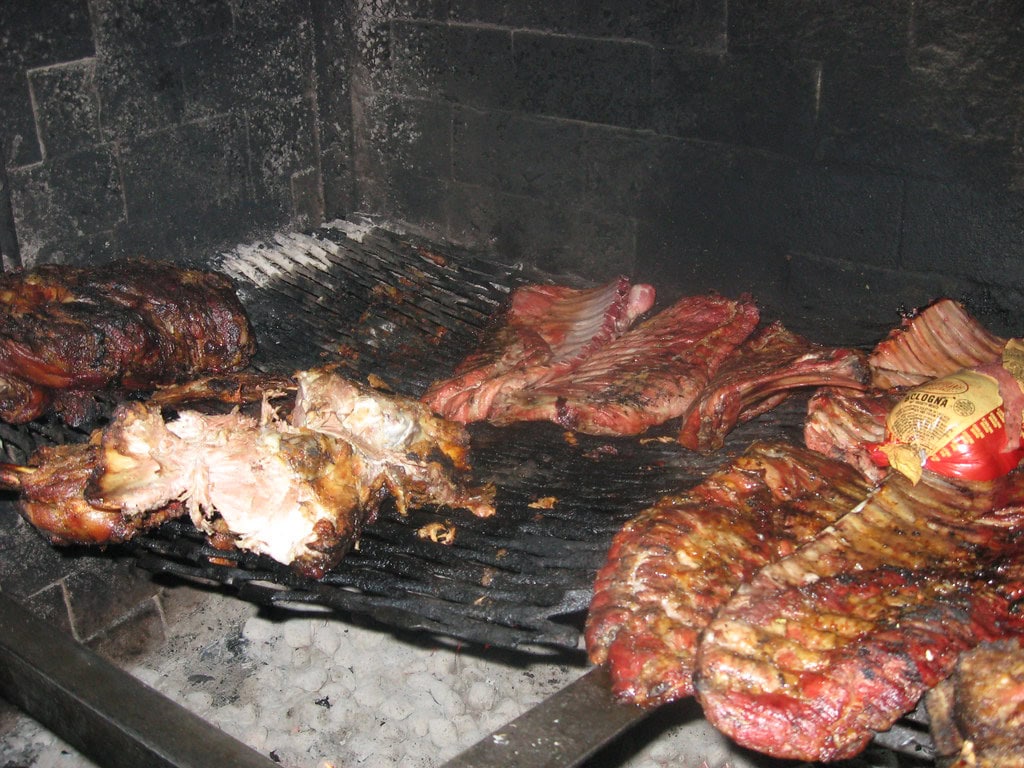
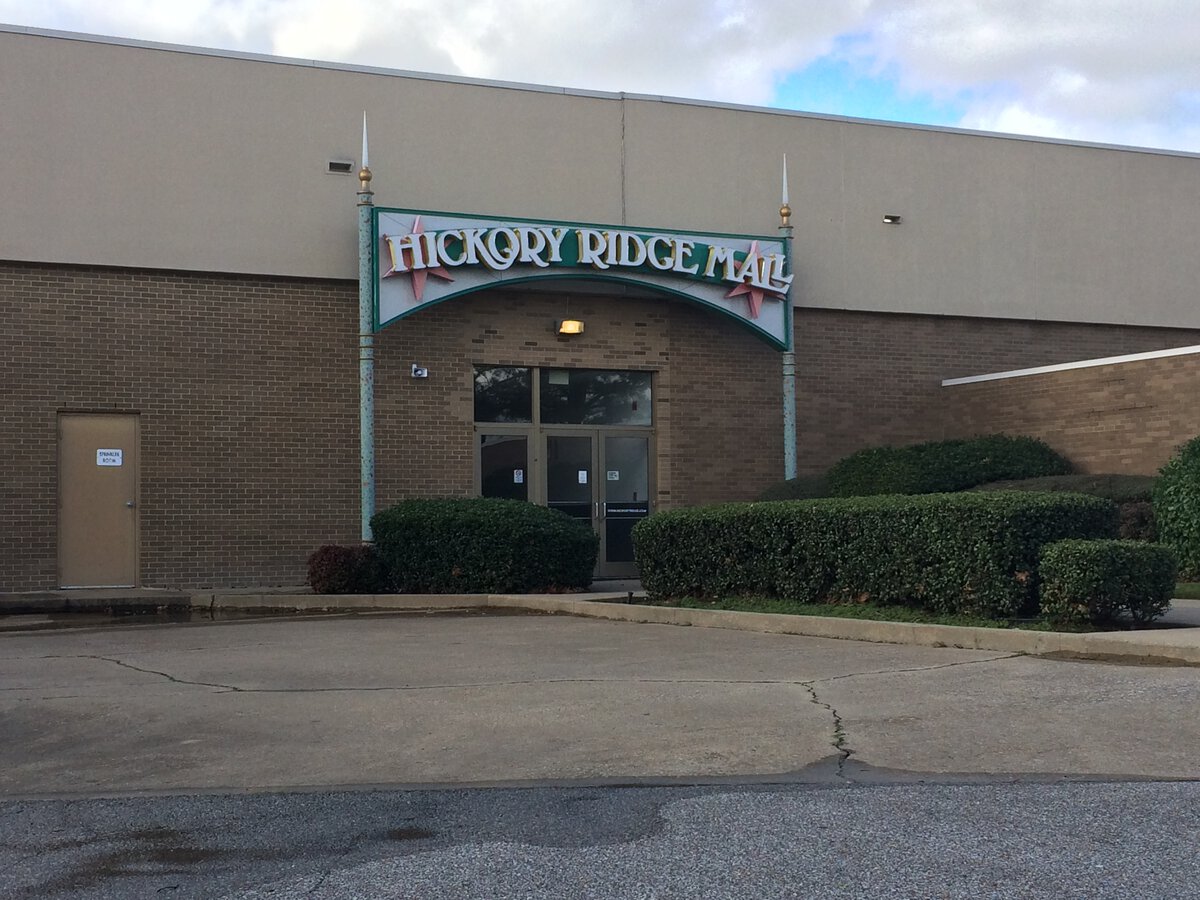
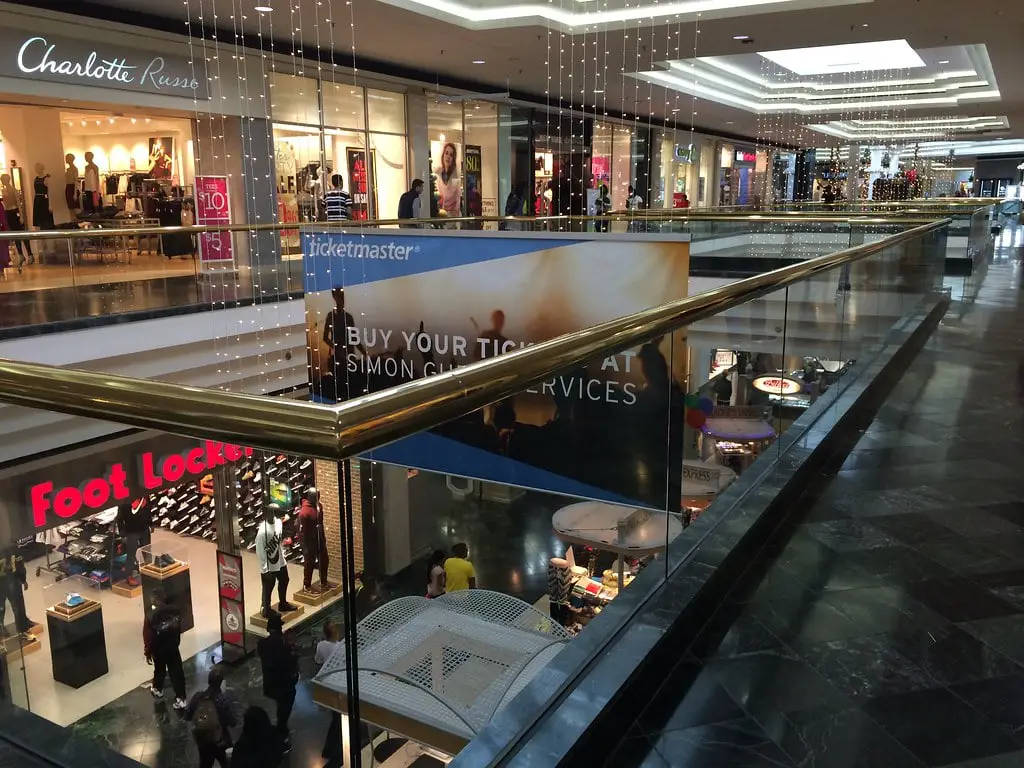
The one truth missing here is why did Dillard's and the others close in the first place. The answer is shoplifting. That and youth disturbances in the parking lot at night on a regular basis. Throw in that single women were more and more afraid to shop there legitimately so and you have closure. Then, the very people who were guilty of all the problems started to complain they had no place to shop, etc. Of course, as usual, the City looked the other way and created a place to spend taxpayer dollars. Go figure .........
I agree that safety concerns have a significant impact on businesses. It's a cycle that's hard to break but not impossible with the right community and city involvement.